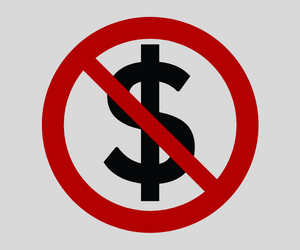I’m a firm advocate that baseball has any number of lessons for life. From the need to have both patience and hustle to being part of a team, baseball truly epitomizes the American ethos.
As we step deeper into this expanded 2022 postseason (another life lesson – embracing change!), let’s look at an unexpected takeaway from the sport: how to be a better charitable giver.
Did you know that Ty Cobb, the Royston, Georgia, native known for being a hard-charging ballplayer (and person in general), had such a soft spot for philanthropy later in life?
I had no idea either, until stumbling on an article a while back called “Ty Cobb: An Unlikely Philanthropist.” How he went about his giving offers some valuable suggestions for today’s donors.
Play Your Position
Recommended
In baseball, players generally specialize in a single position on the field. Ty Cobb specialized in the outfield on game day. Philanthropically, he set his foundation to specialize in education. Specifically, he sought to help hard-working Georgia students with financial needs to pay for college. As the article notes, “As someone who never attended college, he valued education. His father was a high school principal who wanted Cobb to attend college.”
More than just helping kids get through college, however, he wanted to support hard-chargers like himself. His foundation requires a 3.0 grade point average and 30 semester hours in order to qualify. That means applicants must prove themselves by finishing a full year of college and having worked hard before applying. And no filling your course load with what might be perceived as easy “A”s – the guidelines exclude “credits in P.E., ROTC, Band, Chorus and Others of an activity or related area.”
It’s vogue among today’s philanthropy-watchers to tell donors how they should and shouldn’t target their donations. Givers have their own goals and their own areas of expertise. Why shouldn’t they be able to play their desired role?
The restrictions on the Cobb foundation grants surely narrow down the pool of applicants quite a lot, and that was probably the point. Cobb created a program that matched his vision. Other philanthropists are free to set up their programs as they don’t like it.
Make a Game Plan
Once Cobb turned to philanthropy later in life, he did so methodically. Before establishing his educational foundation, he gave $100,000 to a hospital in his hometown that would honor his parents, spending two years visiting other hospitals to determine the best way to make the gift.
Having tested his methods in that one gift, he went about establishing something more permanent. In setting up his foundation, author Mary Moran explained he again took steps to create a clear plan for the foundation that would commit it to its purpose long-term:
“For some time, he consulted with Dr. Daniel Elkins, professor of medicine and head of the Department of Surgery at Emory University School of Medicine in Atlanta. He recruited several other preeminent individuals, such as the Chancellor of the University System of Georgia, to be trustees of his [private foundation]. To this day, a majority of the trustees are prominent educators.”
As mentioned above, the foundation has strict guidelines overseen by trusted experts and a very clear donor-defined mission. These are hallmarks of a thoughtful, intentional game plan.
Rely on Your Teammates
Just as Cobb leaned on education experts to start and then to steer his foundation, you have experts around to assist you in your journey to define your charitable legacy.
This particular article, written with an audience of financial planners in mind, notes “the importance of having values-based philanthropic conversations” between planners and their clients. Your financial planner or trust and estate attorney can be helpful in navigating the waters of determining the charitable vehicles, amounts, and timing options available to achieve your goals.
Likewise, charitable organizations to which you already donate can help you develop ideas of how to effectively leave a legacy. At my own organization, DonorsTrust, we see this with our donor-advised fund clients. We often are asked for advice on groups and causes. Donors turn those thoughts into action in their own way, crafting their own unique charitable giving patterns.
Everyone Can Give
Baseball historians may scoff at the idea of Ty Cobb relying on teammates. He was, after all, notoriously difficult to get along with and was generally disliked by many of his fellow players. He played hard and, despite a Hall of Fame career, did not make many friends along the way.
However, I’m reminded of a piece from Karl Zinsmeister’ Almanac of American Philanthropy, where he notes that, “here’s the fascinating secret of philanthropy…you don’t need to be an angel to participate.”
We can debate whether Cobb was a saint or something else, but it is clear he was strategic in leaving behind his charitable legacy. All donors can take a lesson from this and apply a similar methodical approach to defining their vision and protecting their charitable intent.
Open a Giving Account with DonorsTrust
Do you want to get your charitable investments out of questionable funds and into ETFs that better align with your values? If so, consider opening a charitable-giving account with DonorsTrust. Click here to request an informational packet in the mail or via email and download a free digital copy of our donor prospectus.
Peter Lipsett is vice president of DonorsTrust, the community foundation for liberty. DonorsTrust helps conservative donors simplify, protect, and grow their giving in a tax-friendly way. Learn more at www.donorstrust.org.



























Join the conversation as a VIP Member